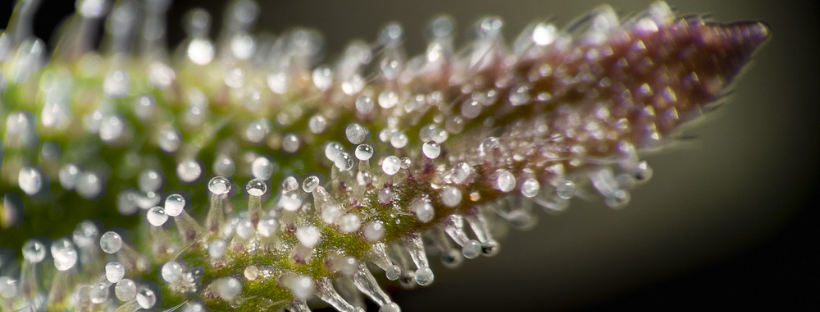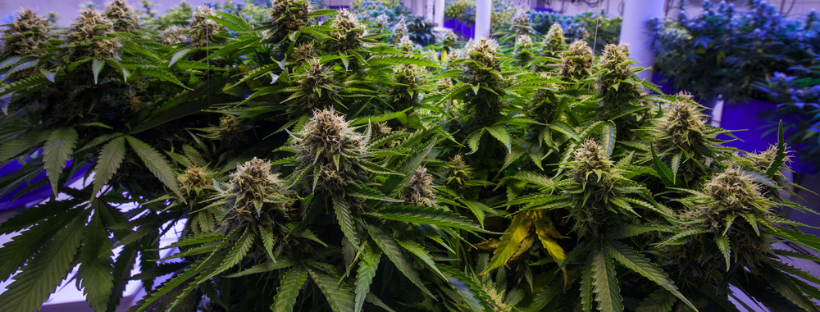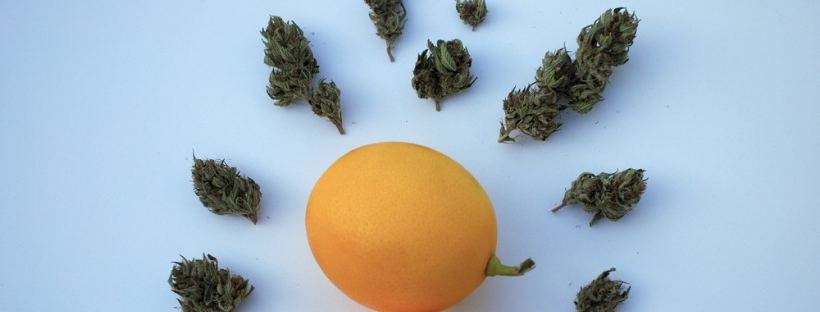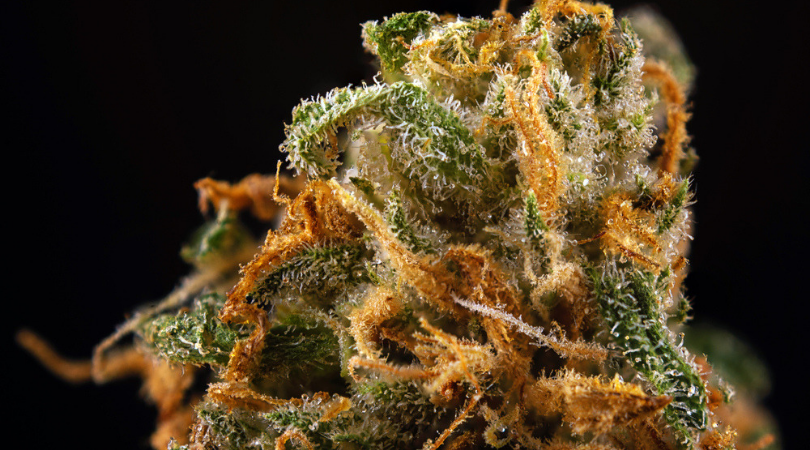WThe marijuana plant is comprised of around 400 chemical compounds, often referred to as phytonutrients. Over one-third of these botanical compounds belong to a broad category of organic hydrocarbons, or in simple words — terpenes.
If you’ve heard the term “terpenes” before, then you’ve probably also heard someone using this word interchangeably with “terpenoids.”
While these terms may sound similar, they have a somewhat different meaning. Terpenes consist of carbon and hydrogen only, whereas terpenoids start to form when cannabis flowers are dried and cured; this happens due to oxidation.
Let’s examine the nature of terpenes and take a moment to talk about their amazing therapeutic properties.
Where to Find Terpenes?
Grab your cannabis bud and look at its surface.
Do you see this gorgeous coating of crystal resin?
These are trichomes, where terpenes are synthesized.
The highest levels of these terpenes can be found in unfertilized marijuana flowers before they begin to age; aging compromises the number of terpenes in cannabis. There are two ways to obtain terpenes: via steam distillation or vaporization. Most terpenes evaporate at the same temperature as THC, which is about 157 C.

What Exactly Are Terpenes?
Terpenes are tiny volatile aromatic compounds consisting of carbon and hydrogen.
They give plants and fruits their unique aroma profiles but they also serve as a natural protection system for the plant against bacteria, fungus, insects, and other environmental threats.
On top of that, the emerging body of scientific evidence suggests that terpenes have remarkable therapeutic properties which, interestingly, create a synergy with THC and other cannabinoids in the cannabis plant.
Below we discuss this synergy often referred to as the entourage effect.
Terpenes & the Entourage Effect in Cannabis
If you’re a less experienced cannabis user, then the “entourage effect term” might not ring a bell, but scientists have been studying this phenomenon for quite some time now.
The entourage effect describes a synergistic relation between different cannabinoids, terpenes, and flavonoids in the cannabis plant.
Marijuana breeders believe this synergy creates a strong therapeutic effect, making the whole plant more effective than its isolated compounds.
In simple terms, dried cannabis flowers or full-spectrum extracts have greater medicinal potential than isolate-based concentrates and can also dampen the THC-induced anxiety often experienced by new users or those who are particularly sensitive to this psychoactive compound.

It seems that the entourage effect theory is backed by scientific research. There are three important studies that shed light on this synergy in marijuana.
The first study was run by E. A. Carlini and I.G. Karniol and found that marijuana strains with equal or higher levels of CBD and CBN to THC can boost the effects of the herb up to four times than isolated THC. This double-blind study also recorded no significant difference in the overall cannabis experience after smoking twice as much of a THC-only strain. The high was often described as heavy and dull.
Later on, J.D. Wilkinson and his team of researchers tried to prove the above hypothesis and determine whether whole-plant marijuana extracts can actually have a greater therapeutic effect than isolated THC. In the study, the scientists compared a cannabis extract containing THC, CBD, and CBN with pure THC and a THC-free extract on animal models of epilepsy and multiple sclerosis.
The results showed that regardless of the case, THC — despite being active — might not be an obligatory ingredient in the treatment of the above diseases, clearly demonstrating that the medicinal potential of cannabis is not limited to its THC content.
Last but not least, there’s a renowned expert in the cannabinoid field Dr. Ethan Russo with his work “Taming THC”, where he supports the theory that non-cannabinoid compounds in marijuana such as terpenes and flavonoids can mitigate THC’s intoxicating effects while increasing the therapeutic index of the plant at the same time.
Russo referred to that phenomenon as “phytocannabinoid-terpenoid synergy”; this means that the chemical compounds in cannabis increase its potential to treat anxiety, depression, epilepsy, pain, inflammation, substance dependence, and cancer.

10 Most Common Cannabis Terpenes
- Alpha-Humulene: it has a distinctive hoppy, woody, and earthy aroma and can be used as an anti-bacterial and anti-inflammatory agent. It’s also an appetite suppressant
- Limonene: as the name suggests, this terpene has a noticeable citrus aroma. It carries anti-anxiety and antidepressant properties.
- Alpha-Pinene: this terpene is what gives pine trees their unique aroma. Alpha-pinene enhances memory and might be useful for asthma sufferers because it’s effective at opening the airways in the lungs.
- Myrcene: it gives marijuana strains a distinct peppery, spicy and herbal scent. Commonly found in bay leaf, thyme, and parsley, myrcene is a powerful antioxidant and an equally strong sedative.
- Linalool: linalool has a robust floral scent and has remarkable painkilling and anti-inflammatory properties.
- Beta-Caryophyllene: this terpene carries the unmistakable scent of cloves and black pepper. Like the majority of terpenes, it’s a decent anti-inflammatory and painkiller, but it also has gastroprotective properties.
- Terpinolene: if your cannabis strain has a piney, herbal, and floral aroma, it probably has high levels of terpinolene. This terpene has strong antibacterial and sedating effects.
- Ocimene: a uniquely smelling terpene that’s scented with sweet, tropical, and musky notes. On top of being an anti-inflammatory, ocimene comes with antiviral properties.
- Eucalyptol: eucalyptol is another popular terpene. It’s responsible for the aroma of eucalyptus and tea trees. This compound has been used for millennia as an anti-inflammatory and antioxidant agent.
- Geraniol: this terpene has a strong floral character. It also comes in handy for pain relief and has antifungal properties that also make Geraniol a potent mosquito repellent.
Are Terpenes Safe?
Terpenes have been publicly acknowledged as safe by the FDA and other government agencies. They have a wide range of effects on the brain; for instance, they boost serotonin levels, increase norepinephrine activity, and level up the concentrations of dopamine, working as natural antidepressants. However, more research is needed to work out better accuracy in predicting what specific terpenes to use in order to help medical marijuana patients treat specific illnesses more effectively.
Do you pay attention to your plants’ terpene profiles?


